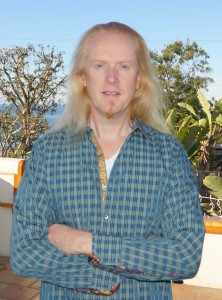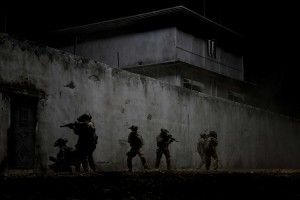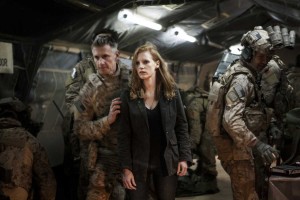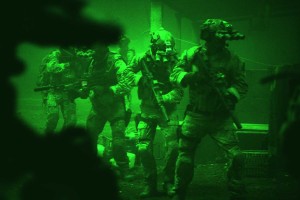
With Zero Dark Thirty, sound designer and re-recording mixer Paul Ottosson continued the collaboration with director Kathryn Bigelow that started with The Hurt Locker – a partnership, which garnered him two Oscar wins. “We have a lot of the same views, in regards to sound,” said Ottosson. “Neither one of us is looking for polished tracks. They need to be organic. It can’t sound like a documentary, but it has to have a raw and gritty feel, true to the subject at hand.”
Ottosson found the direction for his current sound design from the starkly realistic approach of Zero Dark Thirty – a film that traces the decade-long hunt for Osama Bin Laden after the 9/11 attacks. The sound is multi-layered to create unique ambiances in each scene, using the audio to viscerally build up each specific location. “We wanted to place the people in the proper space, but also a really dense space,” explained Ottosson. “When we’re in Pakistan, it’s not just a building that they’re in. It is the eight layers behind that building that make up the city. Like on the Hurt Locker, we used a lot of the sound effects to enhance the emotion of the screen or to peel away to reveal what the character internally went through.”

Even though the film is not an action picture, there is an extensive amount of sound work, especially since there is very little music in the movie to cover big scenes. Without music there are a lot more details to the sound. “I treated this movie quite differently than a lot of movies,” revealed Ottosson. “I cut with a lot of mono sounds. I found that when I build with stereo tracks it becomes really thick with not a lot of specifics after a while. When I build with a lot of mono – left, center, right and surround – I can build a much deeper layer and make it a much denser world.”
In a big shootout scene, a lot of sounds are not needed because the gunfire takes up the whole audio space, but in scenes like the drive through the market there are far more sounds than any action movie. Those sounds are much more defined and focused to a particular area on screen, be it the guy selling his wares, the donkeys, goats and chickens, all the cars and motorcycles, or even the music that is off screen. “It becomes this insane world,” Ottosson explained. “To maintain it across all the cuts is pretty hard. It doesn’t come across when you listen to it, but it is a lot of work to make a scene like that work.”

Even with background tracks that are normally cut in stereo, Ottosson might lose one of the tracks and put a bird on the right, with a slight reverb or delay, playing very little on the left side, and then might put another bird on the hard left, building the backgrounds up with every single speaker to successfully create the full auditory world for the film. Other scenes like the raid that have no music also have an incredible amount of sound that is not on the screen. “In a dark scene like that it also helped tell the viewer what space you were in,” added Ottosson.
On the dialog side, there were around 120 characters, filming in numerous spaces with almost no scenes that were controlled for sound in the whole movie. Ottosson credits production sound mixer Ray Beckett for the fantastic job he did mixing. The director’s choice to shoot with four-camera setups in tight spaces, made it nearly impossible to get a good boom into a scene to record the dialog from all angles, so the sound team often had to rely on lavs with their innate problems such as rubbing against cloth. This all added up to an incredible number of dialog fixes.
 Understanding the challenges that he was going to face, Ottosson and his dialog editor Robert Troy prepared in advance, fixing dialog for scenes even before full reels were complete. “We assembled all the dialog and then went through and picked microphones without doing any cutting at all,” said Ottosson. “Two days afterwards, I was pre-dubbing dialog just to see if we made the right choices and to see what I could fix and what I needed to have Rob recut.” The dialog editor would recut in Pro-Tools and then return tracks to Ottosson for more pre-dubbing. The process continued back and forth with mixed down tracks being sent over to the picture department, updating as they went so that the editors always had the most recent version of the dialog pre-dubs. In this way the sound was organically developing along with the picture cut. There was no traditional pre-dub. The sound pre-dubbed from day two and continued over a number of months until the final dub.
Understanding the challenges that he was going to face, Ottosson and his dialog editor Robert Troy prepared in advance, fixing dialog for scenes even before full reels were complete. “We assembled all the dialog and then went through and picked microphones without doing any cutting at all,” said Ottosson. “Two days afterwards, I was pre-dubbing dialog just to see if we made the right choices and to see what I could fix and what I needed to have Rob recut.” The dialog editor would recut in Pro-Tools and then return tracks to Ottosson for more pre-dubbing. The process continued back and forth with mixed down tracks being sent over to the picture department, updating as they went so that the editors always had the most recent version of the dialog pre-dubs. In this way the sound was organically developing along with the picture cut. There was no traditional pre-dub. The sound pre-dubbed from day two and continued over a number of months until the final dub.
Ottosson did an extensive amount of research for the film. He ascertained the exact guns that the Seals used and recorded them in spaces to mimic the real locations. He discovered that Pakistan’s President Musharaff was to have his re-election party at the Marriott Hotel on the night of the explosion, and incorporated those party sounds into his design. He even found a short recording of the audio from the top-secret stealth helicopter used in the raid. His whole mission was to create the world of the film. “We tried to be very real,” said Ottosson. “In the end of the day you have to stay true to the story.”





